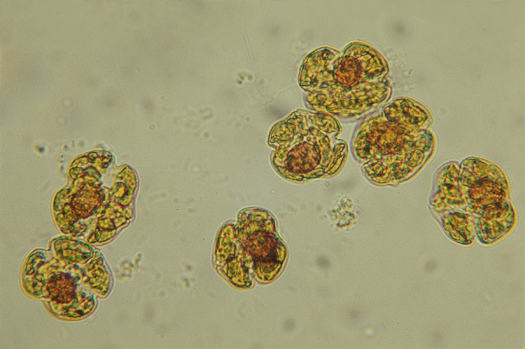Red tide monitoring updates from Mote in southwest Florida
Mote Marine Laboratory scientists and others are monitoring some elevated levels of the naturally occurring Florida red tide algae, Karenia brevis, along southwest Florida. Mote encourages the public to follow online updates.
K. brevis, the single-celled, harmful algae that causes Florida red tide, occurs naturally in the Gulf of Mexico at concentrations considered as “background”. During bloom conditions, concentrations can increase to “very low”, “low”, “medium”, and “high” levels. Recently, some samples in Southwest Florida have revealed “medium” to “not present/background” counts of K. brevis.
When Florida red tide algae cells are present in concentrations elevated above normal “background” levels, people can experience varying degrees of eye, nose, and throat irritation while at the shore or on the water. When a person leaves an area with a red tide, symptoms usually go away. People with asthma, COPD or other chronic respiratory conditions are cautioned to avoid areas with active red tides. Red tide concentrations elevated to levels “low” or above can cause respiratory irritation and may also kill fish. Many factors, including algae distribution, currents and winds, can determine whether effects are noticeable.
Recent Monitoring Results
Water samples collected by the Florida Department of Health Monday, Oct.10, along Sarasota County and analyzed by Mote showed not present/background to medium K. brevis cell counts in all 16 locations.
Three locations had medium concentrations of K. brevis, including Ringling Causeway, Lido Casino and South Lido Park. North Lido Beach showed low concentrations. Longboat Key Beach showed very low concentrations and the rest of the locations showed zero to background concentrations.
As of Tuesday evening, Mote’s Beach Conditions Reporting System has reported slight respiratory irritation on some beaches including Manasota Beach, Lido Key and Nokomis and some dead fish on Siesta Key.
The FWC posts red tide status reports on Wednesdays and Fridays; view this report to track red tide blooms.
Additional Red Tide Resources:
- To report fish kills, contact the FWC Fish Kill Hotline at 800-636-0511 or submit a report online.
- FWC’s statewide red tide status reports (on abundance of K. brevis algae) are typically updated every Friday afternoon
- Based on statewide results, the National Oceanic and Atmospheric Administration provides forecasts of potential respiratory irritation
- Mote’s Beach Conditions Reporting System provides shoreline observations as often as twice daily
- Red tide background info from Mote and FWC (including FAQs)
- Red tide and human health – information and rack cards from Florida Department of Health
- FWC’s red tide offshore monitoring program – a way for volunteers to help
